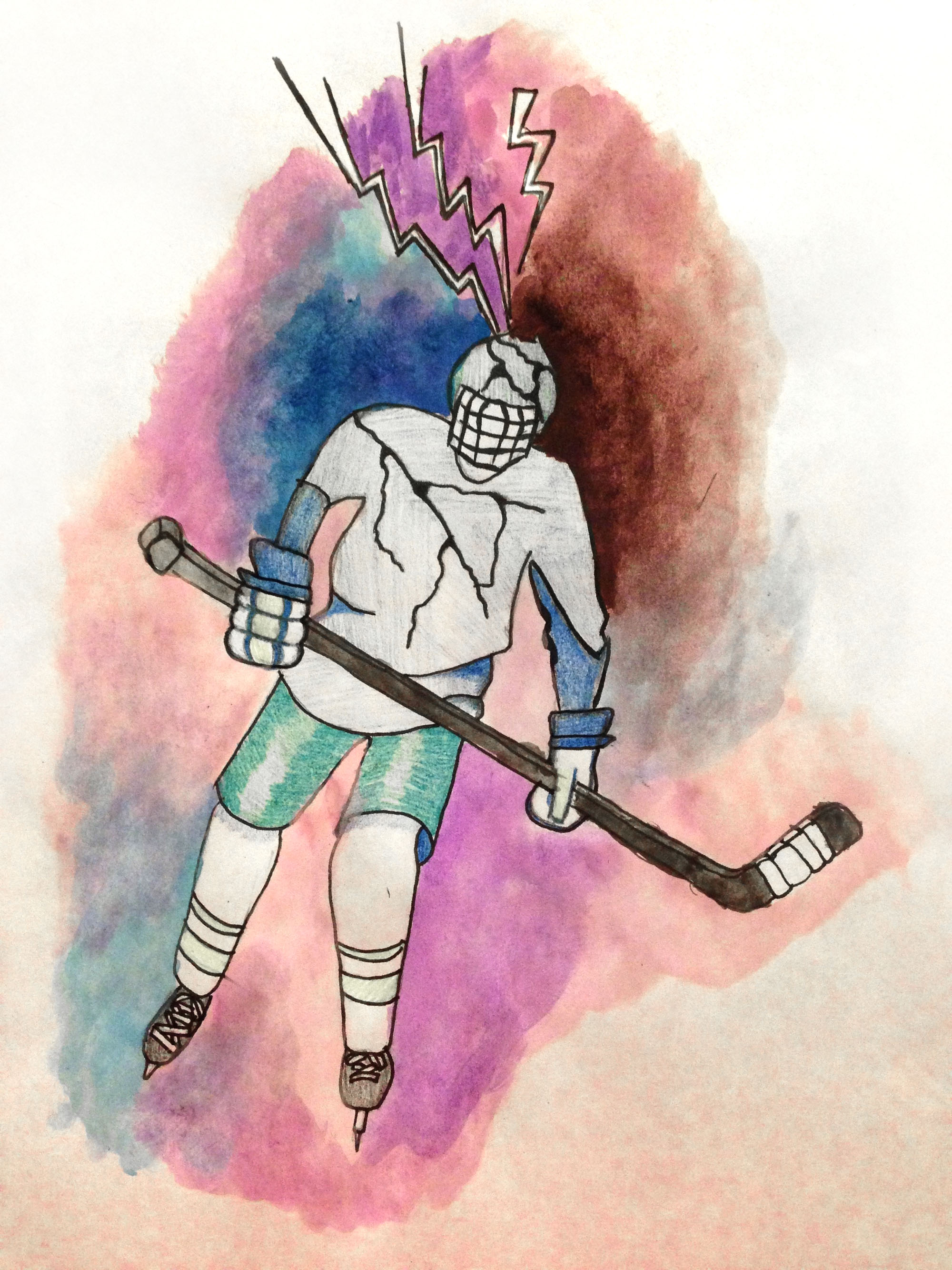For a long time in hockey, players who became concussed during the course of a game were dismissed as merely “getting their bell rung” by a coach and sent back on to the ice after a few minutes of rest. Times have changed. As the long-term effects of repeated concussions have become known, the prevalence of concussions in hockey has come under more scrutiny by fans and the press. As a Daily article (“The NHL’s headaches”, October 16 2014, Sports, page 16) pointed out, the National Hockey League (NHL) has been taking measures to try to protect players from injuries. This most prominently involves instituting rules against hits directed primarily at the head, as well as other hits thought to put players at a high risk of brain injury. In fact, in many ways the NHL has been a leader on this issue. It began studying the effects of concussions in 1997, long before any other sports league was paying attention to the issue. Unfortunately, the league did not implement an updated concussion protocol until 2011. This protocol mandates that any players suspected of having a concussion be brought into a quiet room to be administered a cognitive performance test. While this is a step in the right direction, sometimes concussion symptoms do not develop until hours or even days after the injury, and the onus is still on players to truthfully report their symptoms.
In any case, for many former NHL players, these measures are too little, too late. Over 200 retired players have now signed onto a class-action lawsuit that accuses the league of willfully withholding information about the long-term health effects of repeated head trauma and encouraging dangerous behaviour. This lawsuit is very much in the vein of the successful suit brought against the National Football League (NFL) in 2013 by several thousand former players that resulted in the league paying out a $765 million settlement to the plaintiffs. The NHL has responded to the players’ claims by stating that players should have learned about the long-term effects of concussions from publicly available sources and “put two and two together” about the dangers of the sport they played in.
Whether or not the NHL players’ suit will succeed like that of the NFL players is up in the air. There may be issues with the statute of limitations, since most of the players involved have long been retired. Additionally, the players will have to prove that the long-term health issues that require treatment they are hoping the league will pay for were caused by their time in the NHL rather than from injuries sustained in other causes. This will be difficult to do, as Chronic Traumatic Encephalopathy (CTE), the long term illness caused by concussions, happens because of the cumulative effects of repeated trauma, and most NHL players have been getting hit in the head since their youth hockey days. While the players may be able to prove that they are suffering from depression, forgetfulness, and other symptoms of CTE, it will be very hard for them to prove that the NHL alone is responsible.
This raises the most troubling aspect of the brain injury issue in hockey: no matter how well the NHL deals with concussion issues in the future, youth hockey players are still beating the crap out of each other, perhaps even more than the professionals do. According to hockeyfights.com, in the 1,230 games of this NHL season, there have been 421 fights. In the Canadian Hockey League, a junior league with teen (16-20) players, there have been 1,449 fights in 1,928 games. While it is important to note that fighting doesn’t cause all the injuries that lead to CTE, the fact that youth hockey is so much worse than the NHL in this measure of violence is worrying. Furthermore, three recent studies focusing on college hockey players suggests that for young adults, even one concussion can have measurable long-term effects on the brain.
These studies, published in the Journal of Neurosurgery, indicate that the brains of college players who were concussed during the season exhibited damage that persisted at least until the end of the season. Specifically, the players’ white matter was shown to have sustained damage. White matter is important to brain functioning because it is the medium through which different parts of the brain communicate with each other. While there is not yet enough research to know whether the damage caused by one concussion is permanent, the evidence that multiple concussions cause irreversible damage is indisputable. Paul Echlin, an Ontario sports medicine physician, said to the CBC patients suffering from the effects of head trauma: “it affects their school, their occupation, their forward progress in society. It will lessen their ability to achieve the things they want academically or work-wise and often relationship-wise.” Of the 45 student athletes who participated in the white matter studies, 11 were diagnosed with concussions over the course of one season. If that rate of concussions is anywhere close to representative, then it is very likely that many young hockey players have had grave and permanent harm done to their brains even before graduating from university.
While the concussion issue is often presented as a problem with professional sports, it actually affects players on all levels of play. To prevent young hockey players from doing irreversible harm to their brains, swift action must be taken to regulate and prevent fighting and dangerous hits in youth hockey. While the game of hockey itself may have to be changed a great deal, we are at the point where we must choose between preserving the game of hockey we know and preserving the minds of young Canadians. Only the foolish would think the former more important.
